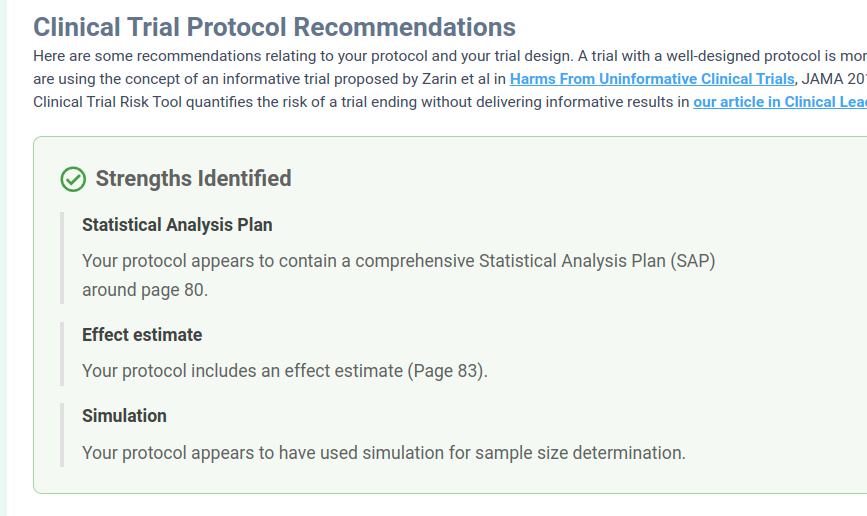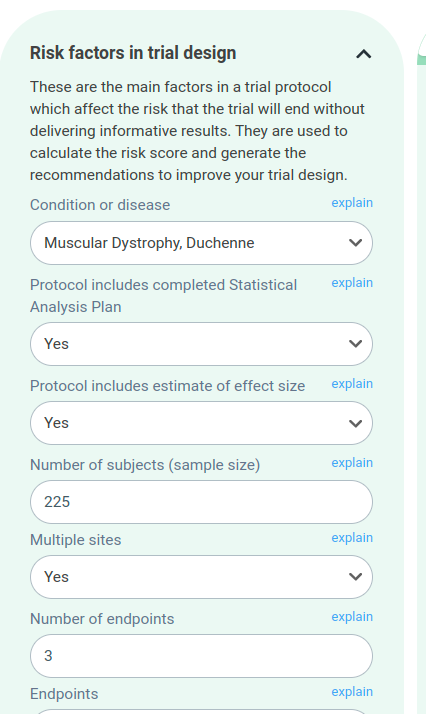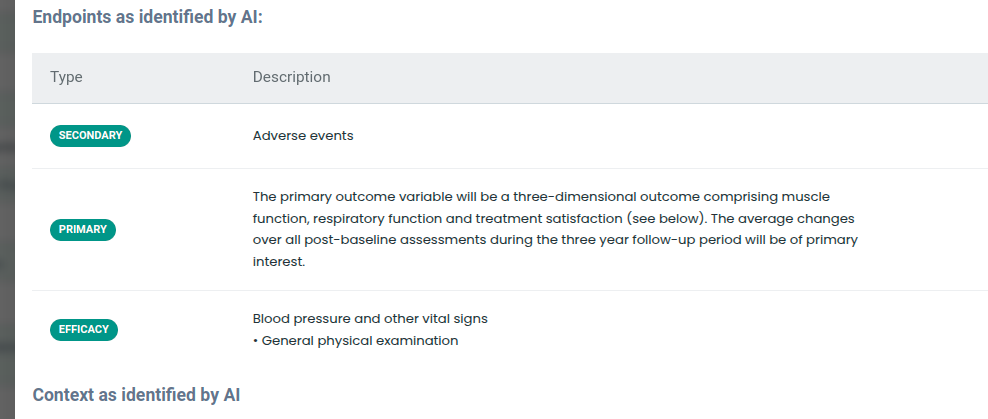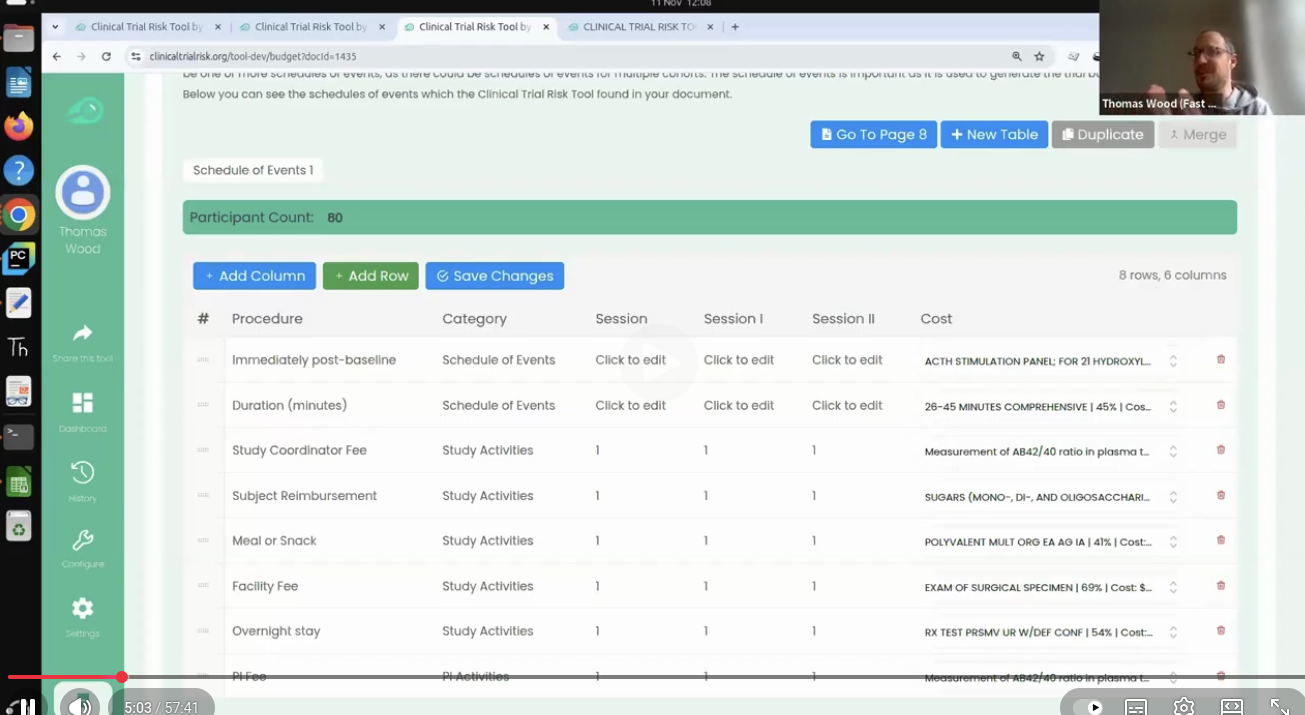
We have improved the Clinical Trial Risk Tool in the last 6 months, making it more user friendly and taking on board the feedback that we’ve received. We’ve improved the accuracy of the machine learning components too.
The tool now outputs its key figures such as risk levels and estimated cost in easily readable cards, so you can see at a glance the key takeaways from your protocol:

The risk factors are now organised into collapsible categories, so you can explore them easily without an information overload.

The tool identifies endpoints and inclusion and exclusion criteria. In future, we are hoping to use this to retrieve trials with comparable endpoints or criteria from the registries such as ClinicalTrials.gov.

Check your trial design
We have an easily digestible set of recommendations for the user to improve the trial, so you can see what are the high priority actions that you need to take with your protocol.

Currently we’re working on a feature to allow the user to generate an itemised budget for the trial in Excel from the schedule of events. We expect this to take a few months and to be finished in Q4 of 2025.
We are also working on making the tool output the probability of success for the trial. A number of groups have calculated aggregate statistics around trials proceeding from Phase 1->Phase 2, or Phase 3->approval, etc, e.g. MIT’s Project Alpha or Chufan Gao, Automatically Labeling Clinical Trial Outcomes, so these statistics or machine learning models could be integrated into the tool, and in addition to outputting the “risk score” it could also output the “probability of success” or similar, based on past trials.
We hope to also produce an accountable budget range (where should a reasonable bid fall), based on past trials.
Gao, Chufan, et al. Automatically Labeling Clinical Trial Outcomes: A Large-Scale Benchmark for Drug Development. arXiv preprint arXiv:2406.10292 (2024).
Shomesh Chaudhuri, Joonhyuk Cho, Andrew W. Lo, Manish Singh, and Chi Heem Wong, Debiasing Probability of Success Estimates for Clinical Trials (2022)

Thomas Wood presents the Clinical Trial Risk Tool at the Clinical AI Interest Group at Alan Turing Institute The Clinical AI Interest group is a community of health professionals from a broad range of backgrounds with an interest in Clinical AI, organised by the Alan Turing Institute. In the group’s November 2025 meeting, the talk was given by Dr Jeff Hogg, Programme Director, MSc AI Implementation (Healthcare), University of Birmingham and Clinical Innovation Officer in AI, University Hospitals Birmingham NHSFT, titled AI Readiness for Health and Care Provider Organisations.

Guest post by Safeer Khan, Lecturer at Department of Pharmaceutical Sciences, Government College University, Lahore, Pakistan Multi-Arm & Multi-Stage (MAMS) Clinical Trials Design Tips The design of clinical trials is increasingly challenged by the Rising Costs, limited availability of eligible patient populations, and the growing demand for timely therapeutic evaluation. Traditional parallel-group designs, which typically compare a single intervention to a control, are often insufficient to meet these pressures in terms of speed, efficiency, and resource utilization.

You can use the t-test when you want to compare the means (averages) of continuous data between two groups, such as blood pressure or maximum concentration of a drug in urine (Cmax). If you have data with a dichotomous outcome, you can use the Chi-Squared test instead - please try our Chi-Squared sample size calculator. The calculator below will calculate the minimum sample size for you. Your expected effect size d is the standardised effect size according to Cohen’s definition.